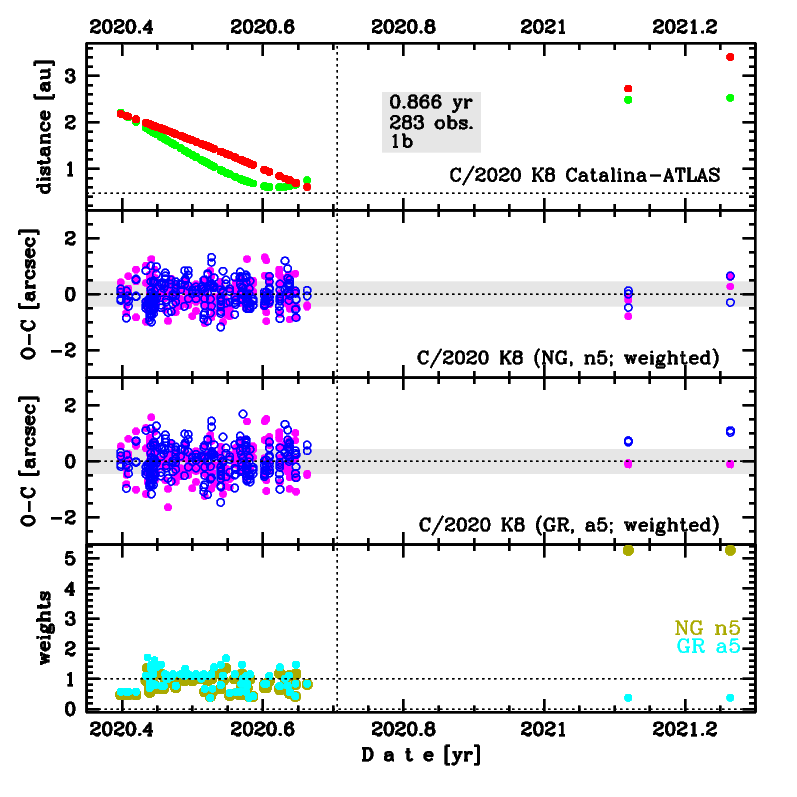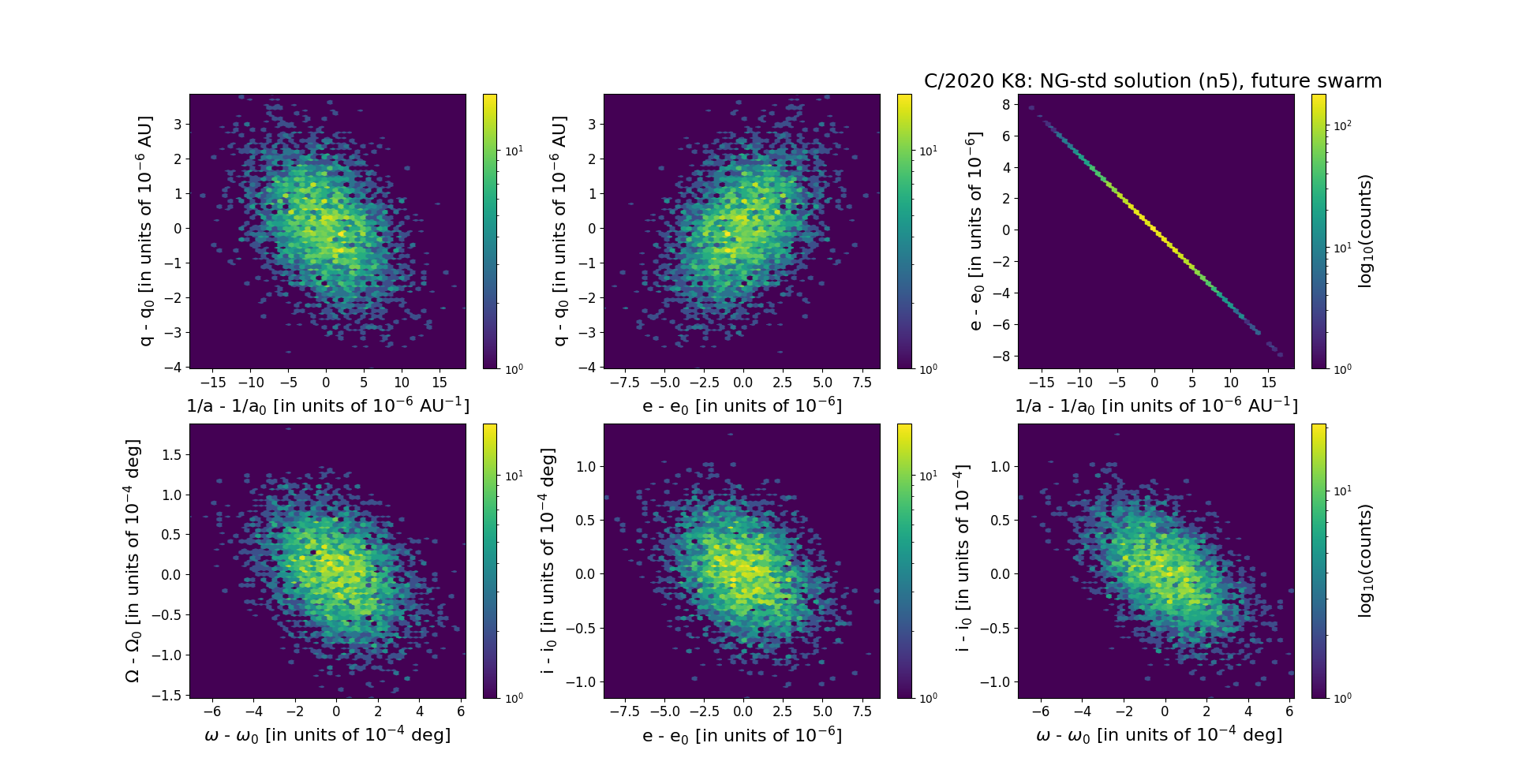C/2020 K8 Catalina-ATLAS
more info
Comet C/2020 K8 was discovered on 25 May 2020, about 3.5 months before its perihelion passage and was observed to 6 April 2021.
Solutions given here (NG and GR) are based on data span over 0.866 yr in a range of heliocentric distances: 2.18 au – 0.475 au (perihelion) – 3.40 au.
This Oort spike comet suffers moderate planetary perturbations during its passage through the planetary system that lead to escape the comet from the solar system on hyperbolic barycentric orbit.
Solutions given here (NG and GR) are based on data span over 0.866 yr in a range of heliocentric distances: 2.18 au – 0.475 au (perihelion) – 3.40 au.
This Oort spike comet suffers moderate planetary perturbations during its passage through the planetary system that lead to escape the comet from the solar system on hyperbolic barycentric orbit.
| solution description | ||
|---|---|---|
| number of observations | 283 | |
| data interval | 2020 05 25 – 2021 04 06 | |
| data type | significantly more measurements before perihelion (PRE+) | |
| data arc selection | entire data set (STD) | |
| range of heliocentric distances | 2.18 au – 0.47 au (perihelion) – 3.4 au | |
| type of model of motion | NS - non-gravitational orbits for standard g(r) | |
| data weighting | YES | |
| number of residuals | 550 | |
| RMS [arcseconds] | 0.44 | |
| orbit quality class | 1b | |
| orbital elements (barycentric ecliptic J2000) | ||
|---|---|---|
| Epoch | 2312 09 18 | |
| perihelion date | 2020 09 14.07094567 | ± 0.00023388 |
| perihelion distance [au] | 0.47766782 | ± 0.00000117 |
| eccentricity | 1.00022850 | ± 0.00000220 |
| argument of perihelion [°] | 260.309760 | ± 0.000173 |
| ascending node [°] | 181.259888 | ± 0.000045 |
| inclination [°] | 31.329686 | ± 0.000032 |
| reciprocal semi-major axis [10-6 au-1] | -478.37 | ± 4.60 |
| file containing 5001 VCs swarm |
|---|
| 2020k8n5.bpl |

Upper panel: Time distribution of positional observations with corresponding heliocentric (red curve) and geocentric (green curve) distance at which they were taken. The horizontal dotted line shows the perihelion distance for a given comet whereas vertical dotted line — the moment of perihelion passage.
Middle panel(s): O-C diagram for a given solution (sometimes in comparison to another solution available in CODE), where residuals in right ascension are shown using magenta dots and in declination by blue open circles.
Lowest panel: Relative weights for a given data set(s).
Middle panel(s): O-C diagram for a given solution (sometimes in comparison to another solution available in CODE), where residuals in right ascension are shown using magenta dots and in declination by blue open circles.
Lowest panel: Relative weights for a given data set(s).
